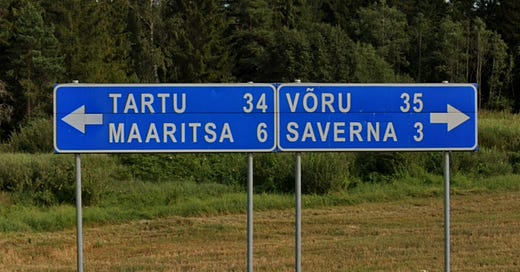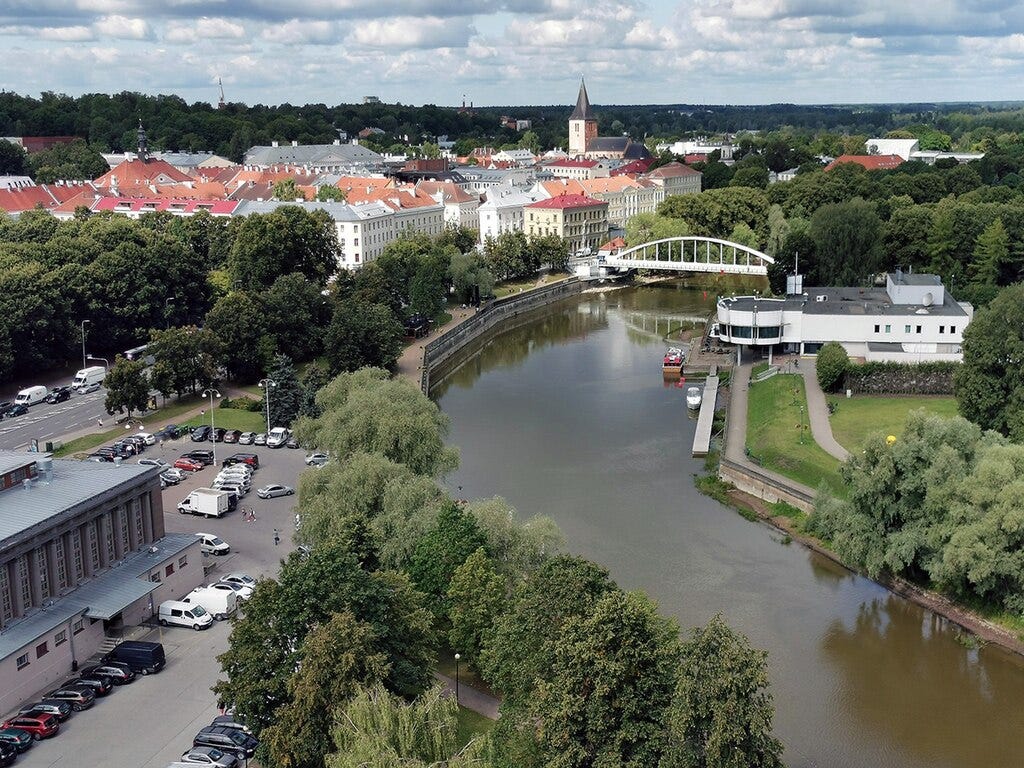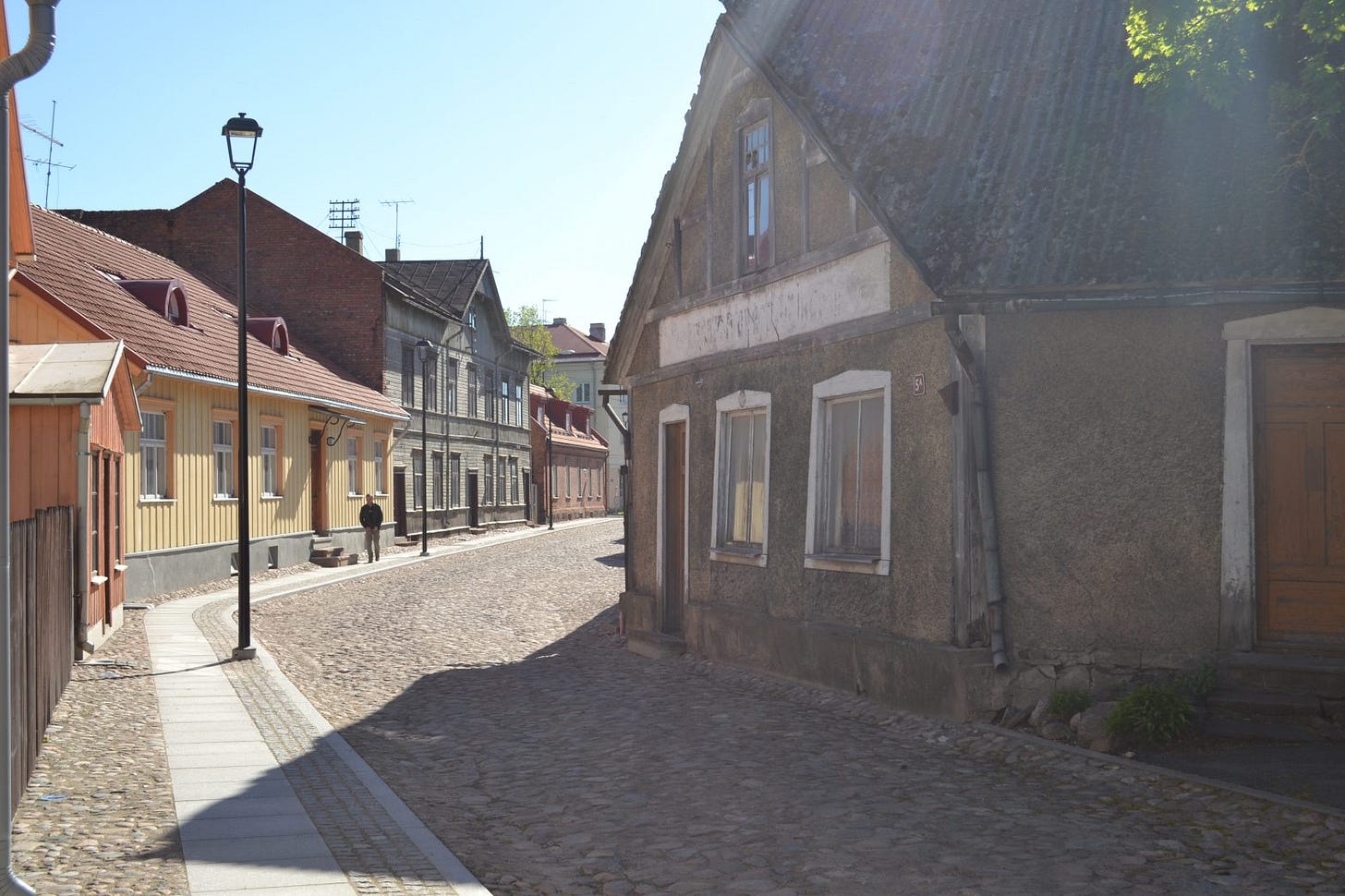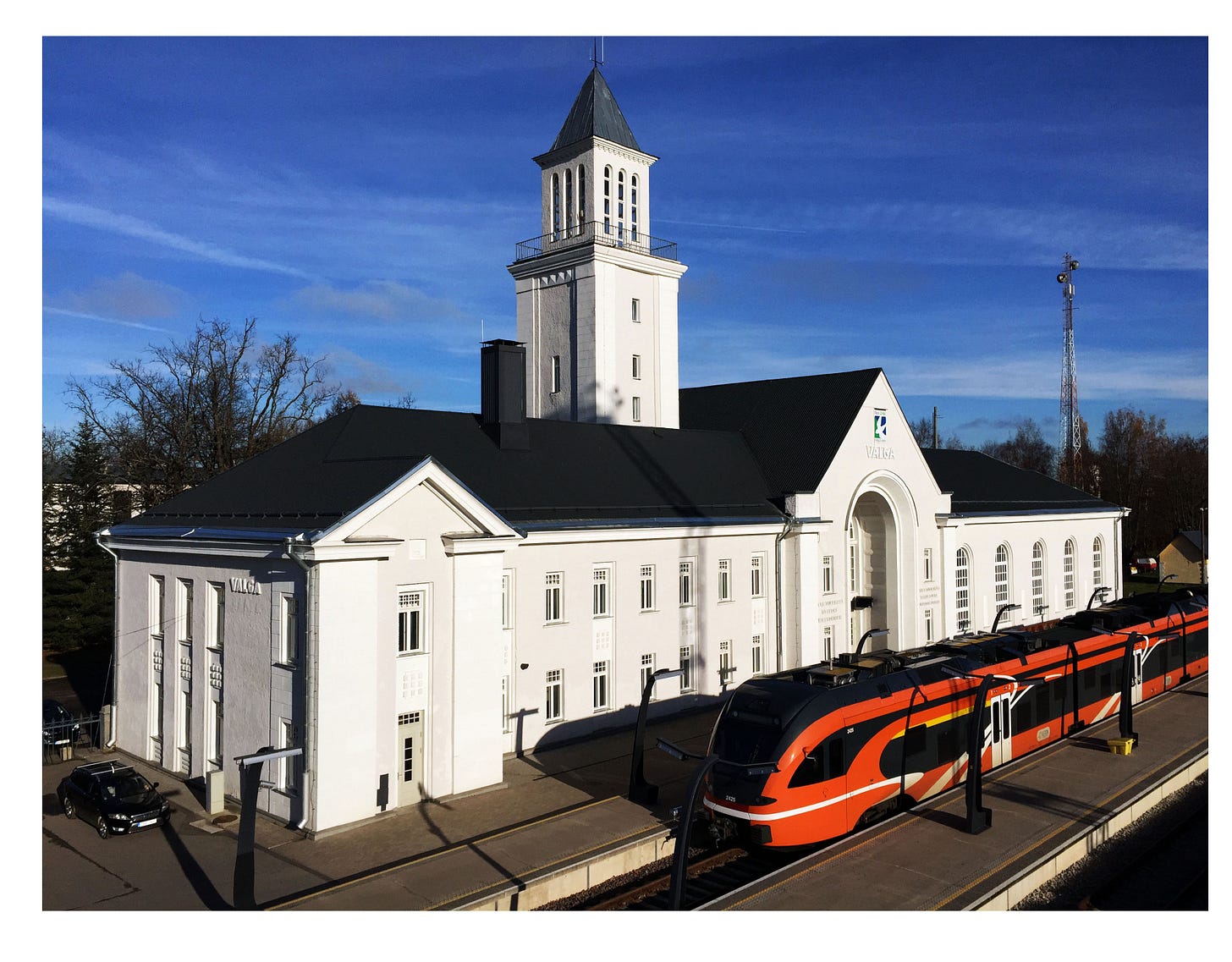Most names are built from Finno-Ugric roots, Baltic substrates, or Old Scandinavian and Germanic borrowings
Estonian place names reflect a deep-rooted relationship to land, water, and layered identity. With a language distinct from its Indo-European neighbours and centuries of foreign rule, Estonian toponyms are where native structure meets colonial residue — a grammar of forests, forts, and forgotten tribes.
Top 12 Cities of Estonia
1. Tallinn
“Danish Fort”
[Estonian: Taani, ‘Danish’; linn, ‘fort’, ‘town’]
The capital, formerly known as Reval, sits where Viking raids met crusader walls. Founded by the Danes in 1219 and later ruled by Germans, Swedes, and Russians, Tallinn is now a tech-savvy capital with a medieval core and a digital soul.
2. Tartu
It was initially a settlement named after the Estonian god, Tar [a.k.a. Taara, Tooru, Tharapita and Tarapitha, Uku or Jumal. Tar resembles the Finnic Ukko and the Germanic Thor].
In a successful military raid in 1030, Grand Prince Yaroslav the Wise of Kiev captured Tartu, Estonia and renamed it Yuryev after his patron saint.
Estonia’s second city is its cultural and intellectual heart, home to the University of Tartu (est. 1632). Known for literature, science, and progressive politics, Tartu combines riverside charm with academic rigour.
3. Narva
The Narva River [also Narwa or Narova], gives its name to the Neolithic Narva culture, as well as the city of Narva. The river flows 77 km(48 mi) from Lake Peipus to the Baltic Sea.
It has been suggested that the name is derived from Finnic: narva, 'waterfall' or 'stream'.
A heavily Russian-speaking border city on the Narva River, opposite Russia’s Ivangorod. Narva has been bombed, rebuilt, and politically torn every which which way — yet remains defiantly Estonian.
4. Pärnu
“Linden (town)”
[Estonian: pärn, ‘Danish’; ‘linden tree’]
Estonia’s summer capital and spa town. Pärnu sits on the coast with sandy beaches and 19th-century charm — popular with both Estonians and Finns.
5. Kohtla-Järve
“Lake Village” [Estonian: kohtla, ’village’; and järve, ‘lake’]
An industrial city shaped by oil shale extraction, Soviet planning, and post-Soviet redefinition. The name justaposes older local geography with modern urban sprawl.
6. Viljandi
“Grain (town)” [Estonian: vilja, ‘grain’ or ‘cereal’]
The region has historically been important for agriculture
A hilltop town with lake views and strong folk culture. Viljandi is known for its annual folk music festival and its moody castle ruins.
https://deepbaltic.com/2016/03/17/viljandi-a-jewel-of-a-town-in-deepest-estonia/
7. Rakvere
From Rako personal name; and Estonian: (toponym) ‘settlement’ or ‘farmstead’.
A legend tells the tale of a raki, ‘small dog’ whose vere, ‘blood’ was spilt when he was kicked by Kalevipoeg, hero of Estonia’s national epic.
Home to one of Estonia’s most dramatic hilltop castles and a famously large bronze bull. A small city with big symbolism.
8. Maardu
“Manor” [Estonian: word mõis, ‘manor’ [Finnish: moisio] a borrowing from Low German/Old Swedish: mēse, mēz(e)]. This dates back to the Middle Ages when German-speaking landlords and Swedish nobility ruled the roost.
Maardu has a recorded manor history dating back to the 14th century, aligning with the German-Danish expansion into northern Estonia. The -du ending is a place-based suffix.
An industrial suburb east of Tallinn, shaped by Soviet-era infrastructure and post-independence reforms. Known for its diverse population and port connections.
9. Sillamäe
“Bridge Hill”. [Estonian: sild, ‘bridge’; and mäe, ‘hill’]
A Stalinist show-town on the northern coast, once closed to outsiders due to uranium processing. Today it’s open, but still heavy with Soviet architecture and symbolism.
10. Haapsalu
“Aspen Grove” [Estonian: haab, ‘aspen’; and salu, ‘grove’].
A charming coastal town known for its curative mud, wooden houses, and the ghostly White Lady of its castle. Haapsalu once had a direct rail line to the Tsar.
11. Kuressaare
“Crane Island Town”. [Estonian: kurg, ‘crane’; saar, ‘island’]
Capital of Saaremaa, Estonia’s largest island. Kuressaare has a storybook castle, spa traditions, and slow island rhythms.
12. Valga
Shared town with Valka, Latvia. Probably from Latvian: valga, ‘wet’, ‘humid’
The town is split by the border — Valga on the Estonian side, Valka on the Latvian. Once one town, now a quiet border-crossing with two languages and one shared past.
Estonia: A Brief History in Eras
Prehistory & Tribal Estonia (–13th c.)
Finno-Ugric peoples, sacred groves, runic chants. A land of oral culture and forest-based communities.Crusader and Hanseatic Era (13th–16th c.)
Danish conquest, Teutonic Knights, and German-speaking elites. Tallinn joins the Hanseatic League.Swedish and Polish Rule (16th–18th c.)
Sweden governs the north, Poland the south. Lutheranism spreads. Baltic German nobility entrenched.Russian Empire (18th–1918)
Estonia absorbed into Tsarist Russia, but retains German landowners. The Estonian national awakening begins.First Republic (1918–1940)
Estonia wins independence after WWI and the War of Independence. A modern parliamentary democracy emerges.Occupation and Soviet Era (1940–1991)
Soviet annexation, Nazi occupation, then Soviet rule again. Deportations, Russification, resistance.The Singing Revolution and EU Statehood (1991–Today)
Independence restored through mass singing protests. Estonia joins NATO and the EU. Becomes a digital state with a distinct global voice.
How Estonian Place Names Work
Estonian place names are compact, often descriptive, and deeply rooted in nature. Many are two-part compounds, combining:
Geographic features: mägi (hill), järv (lake), saar (island), oja (stream)
Descriptors: suur (big), must (black), vana (old), uus (new)
Possessives or personal names
Suffixes: -küla (village), -linn (town/city), -mäe (of the hill)
Influences include:
Finno-Ugric roots: indigenous, pre-Indo-European structure
German, Swedish, Russian layers: often seen in alternate historical names
Soviet renamings: industrial or ideological replacements, some reversed post-1991
The result is a landscape where the names are not just labels — they are linguistic fossils.
Glossary: 40 Estonian Place-Name Elements
ala – ‘area, region’ – Karala – Bear Area
anu – ‘gift’ or personal name root – Anumõisa – Anu's Manor
argi – ‘weekday’ or ‘everyday’ – Argimäe – Everyday Hill
elu – ‘life’ – Eluküla – Life Village
hansu – ‘Hans’ (personal name) – Hansuküla – Hans’s Village
isa – ‘father’ – Isaküla – Father’s Village
jõe – ‘of the river’ – Jõeküla – River Village
kaev – ‘well’ – Kaevuotsa – Well End
karja – ‘herd’ – Karjaküla – Herd Village
kase – ‘birch (tree)’ – Kasevälja – Birch Field
hall – ‘grey’ – Halliste – Greystone or Grey Place
hein – ‘hay’ – Heinamäe – Hay Hill
järv – ‘lake’ – Peipsi järv – Lake Peipus
kivi – ‘stone’ – Suurkivi – Great Stone
kõrts – ‘tavern’ – Kõrtsuotsa – Tavern End
kõrve – ‘wilderness’ – Kõrvemaa – Land of Wilderness
küla – ‘village’ – Väljaküla – Field Village
kurg – ‘crane (bird)’ – Kuressaare – Crane Island
laht – ‘bay’ – Tallinna laht – Bay of Tallinn
liiva – ‘sand’ – Liivaküla – Sand Village
laste – ‘children’s’ – Lasteaed – Kindergarten
linn – ‘town, city’ – Tallinn – Danish Town
loss – ‘castle’ – Rakvere loss – Rakvere Castle
maa – ‘land, region’ – Läänemaa – Western Land
maa – ‘country’ – Eesti Vabariik – Estonian Republic
mäe – ‘of the hill’ – Sillamäe – Bridge Hill
mägi – ‘hill, mountain’ – Munamägi – Egg Hill
met – ‘forest (root)’ – Metsaküla – Forest Village
must – ‘black’ – Mustla – Black Place
nõmme – ‘heath’ – Nõmme – Heath
oja – ‘stream’ – Mustoja – Black Stream
pae – ‘limestone’ – Paeküla – Limestone Village
põllu – ‘field (genitive)’ – Põlluküla – Field Village
rand – ‘shore, beach’ – Pirita rand – Pirita Beach
rahva – ‘people’ – Rahvalinn – People’s Town
raud – ‘iron’ – Raudteejaam – Railway Station
saar – ‘island’ – Saaremaa – Island Land
salu – ‘grove’ – Haapsalu – Aspen Grove
soo – ‘bog, swamp’ – Soomaa – Bog Land
suur – ‘big’ – Suurküla – Big Village
tee – ‘road’ – Pärnu maantee – Pärnu Road
torni – ‘tower’ – Tornimäe – Tower Hill
uja – ‘stream (variant)’ – Mustuoja – Black Stream (alt. form)
uus – ‘new’ – Uus Maailm – New World
vana – ‘old’ – Vanalinn – Old Town
välja – ‘field’ – Väljaküla – Field Village
veski – ‘mill’ – Veskimetsa – Mill Forest
väike – ‘small’ – Väike-Maarja – Little Mary










